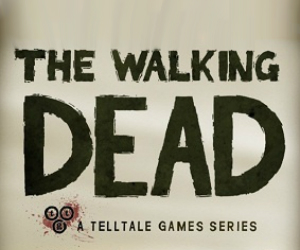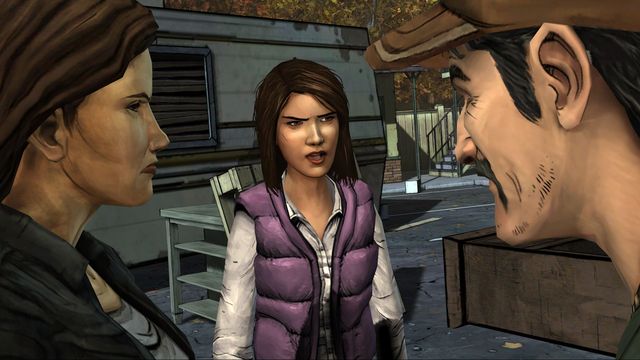The Walking Dead: Episode Two – Starved for Help Review
 Game: The Walking Dead: Episode Two – Starved for Help
Game: The Walking Dead: Episode Two – Starved for Help
Developer: Telltale Games
Publisher: Telltale Games
Available on: Xbox LIVE Arcade, PlayStation Network, PC and Mac (Reviewed on Xbox LIVE Arcade)
Episode one of The Walking Dead brought us A New Day. If that episode set up the scene, introduced us to a group of characters and laid down some ground rules about how the rest of the series would progress, episode two pushes things a lot further and really tests your nerves and decision-making skills to breaking point.
The title alone, is ominous enough. In Starved for Help, the group are predictably running low on supplies and food is incredibly scarce. This isn’t helped by the fact that we have picked up another survivor in the camp in the interval between episodes, a young ex-military man called Mark. As such, tensions in the group are getting strained. The main conflicts are a struggle for leadership between family-man Kenny and father and daughter pair Lily and Larry. On top of that, Larry knows the less than squeaky-clean past behind player-controlled character Lee, so takes every opportunity to swipe at him. Without giving too much away, an opportunity to find food at a local Dairy farm arises, but things with the friendly farmers seem somewhat off. Can our group of survivors trust these would-be good Samaritans?
The crux of the story therefore comes from the need to protect your group, including the little girl Lee rescued and took under his wing in episode one; Clementine. The bond with Clementine again forms an important part of this episode, and even when everyone else is squabbling and fighting, you still care enough for Clem to want to fight on and save the day. This is the emotional crux of the game, every decision you make will effect how she sees you and, in turn, how she acts further down the line. Not only does this throw up more dilemmas, but it helps keep you honest; you wouldn’t want to set a bad example for a child would you? There are some huge choices to make in this episode and you will really have to weigh up how your decisions will carry through into the future of the series. There are some really big choices here and the player actually feels some guilt at times for some decisions made.

Of course, the graphics and sound are more or less the same as we encountered when we reviewed episode one. The musical score and ambient sounds once again play an important part in setting the scene throughout the game, creating an appropriate atmosphere of foreboding, angst or even relative peace, depending on the situation. When the action does ramp up a notch, the music becomes more strained and dramatic, which helps make the action more tense and stressful to play; which is obviously the aim of the developers.
There are a few times where slight graphical errors and moments of slowdown become an issue between cutscenes and set-pieces, with pauses in the action and moments where speech is interrupted. Unfortunately this seems to be becoming a common issue with the episodic Telltale Games. Jurassic Park suffered heavily, whereas it always seems to occur to a lesser extent in their other titles. This is something they really need to address, as whilst it doesn’t break the game, it certainly slows down and throws off the flow of the action, especially in their more action orientated titles.
Gameplay is also more or less unchanged from the debut episode. It should be said though that you will need slightly faster reflexes this time around. Episode one taught us how to use the control system, but number two tests how adept you have become using them. Both in action sequences and in conversations, the game doesn’t give you as much time to react and is less forgiving. Dialogue choices are more difficult as you aren’t given such a long time to decide what conversation trees to follow. In certain action scenes you will have to juggle moving both analog sticks and tapping buttons – to move Lee around, to move your aiming reticule and to interact – all in a short space of time. This makes the game tougher, but then it also seems like more of a challenge, and more rewarding when you do perform something successfully. You are in a Horror film, so your reactions need to be fast and your judgement decisive.
The episode does seem to end just when things have got really exciting, but that is how episodic television and therefore episodic gaming is successful; keep the player wanting more. Tease them with the “next time on The Walking Dead” trailers, which take into account your decisions so far. Again, you will want to re-play the episode – or at least sections of it – to see how different choices will play out. There are usually two or three options in most situations, and then each different choice you make will open up different ones further down the line. Rewinding to important choices in an episode is easy, so you won’t feel backed into a wall if you made a bad choice; trial and error is almost a must here. Cutscenes still cannot be skipped if you have seen them before, which is a serious oversight, and if fixed it could make second playthroughs far more enjoyable. Hopefully this will be implemented in a future patch or a later episode.
VERDICT: Telltale Games have performed quite a feat in that the experience you have in episode two could be very different than one your friend has. Not only because of what you do in Starved For Help, but also because of the foundations you laid down in A New Day. Unlike a game such as Mass Effect 3, that gave the impression of choice but drove players into one basic direction, The Walking Dead twists and changes with everything you say and do. Players can feel the immediate consequences of their choices and even at the end of the second episode, will find themselves thinking that perhaps it would have been different if they had chosen option C in episode one?
That is a rare distinction, but this series points the way to the future of gaming. Personalised experiences that are immersive and incredibly interactive. In fact, I found myself so spoiled by the interactivity that when I was presented with a non-interactive cutscene, I was let-down that I couldn’t impose my own will on the situation. This is a major strength of the series, not a negative. Other titles have offered choice, but then secretly dead-ended us or funnelled players where the designers wanted. There may be a few technical problems, but The Walking Dead actually feels like your own, personalised survival experience, with a real emotional heart, and you can expect a lot more where that came from, as we still have three episodes left to play in this series.






